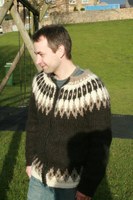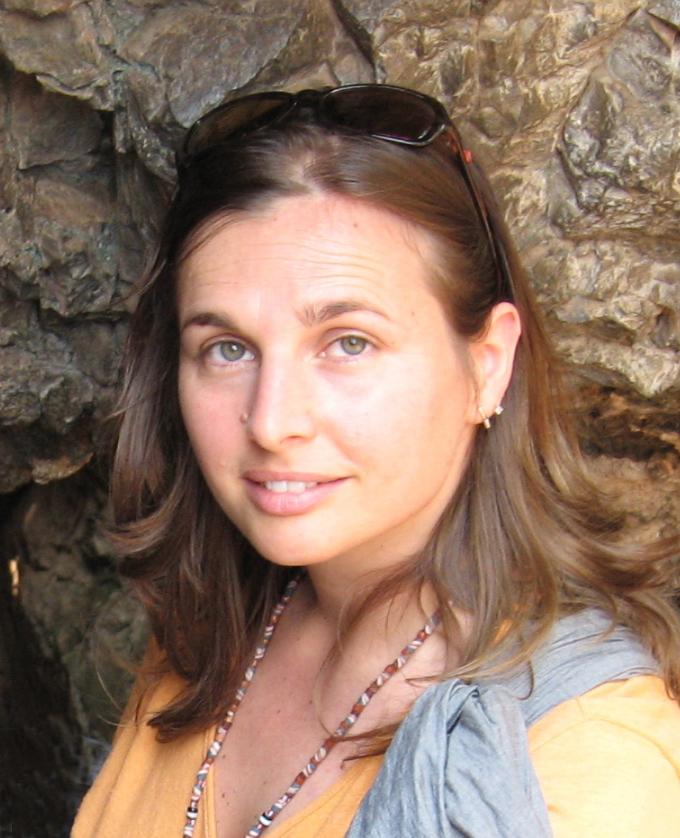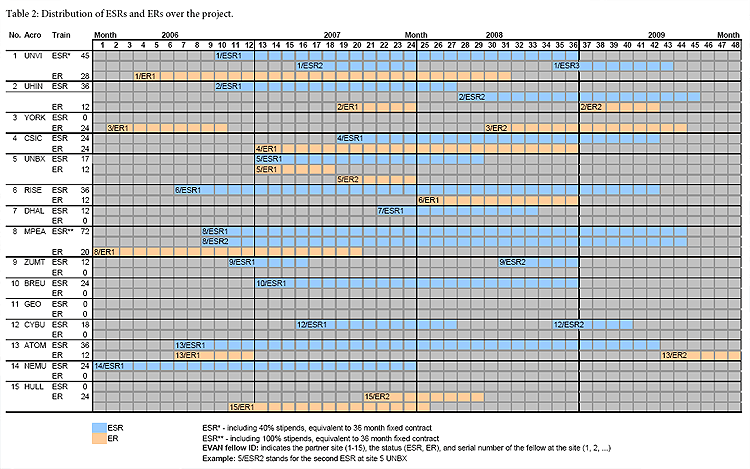Employed Fellows
Philipp Gunz, Ph.D.was employed as a Marie Curie postdoctoral fellow (EVAN Training Network). He is a physical anthropologist developing software to deal with taphonomic distortions and estimate missing parts of incomplete fossil crania using reference-based geometric and statistical methods. |
Priscilla Bayle, Ph.D. studentwas employed as a Marie Curie doctoral fellow (EVAN Training Network). She is a PhD student working on dental development patterns in the genus Homo, and particularly in Neanderthals and modern humans under the scientific co-direction of Roberto Macchiarelli and José Braga. |
Stanislav Katina, Ph.D.was employed as a Marie Curie postdoctoral fellow (EVAN Training Network). He is a biostatistician and his research covers theoretical fields as Shape Analysis, Nonparametric Regression, Halfspace Location and Regression Depth, Permutation Tests, Multivariate Statistical Analysis, Computer Statistics and Data Analysis and applied fields as Zoology, Physical and Clinical Anthropology and Electrocardiology. |
Luca Fiorenza, Ph. D. studentI was a PhD student working on occlusion and function of hominid teeth, studying the wear patterns in Neanderthals and early Homo sapiens by 3-D analysis. |
 |
Modern functional models of jaw movement are employed in order to examine possible differences in tooth wear patterns.
Nandini Singh, Ph.D. studentI was a PhD student at the department of Human Evolution, Max Planck Institute for Evolutionary Anthropology. The focus of my research is on the integrative aspects of the evolution and development of the primate cranium. This work is co-supervised by Dr. Katerina Harvati and Professor Jean-Jacques Hublin. |
 |
Simon Neubauer, Ph.D. studentI was employed as a Marie Curie doctoral fellow (EVAN Training Network) at the Department of Human Evolution of the Max Planck Institute for Evolutionary Anthropology in Leipzig. For my PhD project, I am working on endocranial form changes during hominoid ontogeny to learn about brain development |
 |
Humans give birth to offspring with relatively small brains. The fetal pattern of brain growth continues after birth in contrast to most other primates in which brain growth slows down rapidly after birth. Using CT scans and 3D landmark data, including semilandmarks on curves and surfaces, for geometric morphometric analyses, I investigate endocranial form (shape and size) changes in ontogenetic series of humans and chimpanzees and compare the ontogenetic trajectories. To learn about evolutionary changes of ontogenetic patterns, fossil hominids will be included in the analysis.
Oualid Ben Ali, Ph.D.Dr. Oualid Ben Ali obtained a Ph.D. degree in Computer Science from Laval University (Quebec) (supervised by Bernard Moulin since 2001). He is mainly interested in using multiagent systems to simulate behaviors and phenomena in 2D-3D geographic virtual spatial envirnoments. He is working on a project whose goal is to simulate shopping behavior in shopping malls using geosimulation and multi-agent systems. |
Markus Bastir, Ph.D.Markus Bastir was employed as a Marie Curie post-doctoral fellow (EVAN training network) at the Department of Paleobiology of the Museo Nationale de Ciencias Naturales. His research involves geometric morphometrics and virtual anthropological applications in the study of the evolution and development in the human craniofacial system in Pleistocene hominids. |
Alexandre Bourdeu, Ph.D. studentI was employed as a Marie Curie doctoral fellow (EVAN Training Network) at Breuckmann GmbH in Meersburg, Germany. I am currently working on the design of an application dedicated to the digitization of human face and body. |
Yann Heuzé, Ph.D.was employed as a Marie Curie postdoctoral fellow (EVAN Training Network) at Radiologie II, Medizinische Universität Innsbruck. He is an anthropobiologist developing tool for planning custom implants of large bone defects of the skull. |
To optimize bone implant design different techniques will be used/developed: 3D Geometric Morphometrics dealing with landmarks and semilandmarks, automatic finding borders of the bone defect, rapid prototyping technique. The preliminary objective of this one-year position is to summarize the needed methods and algorithms to generate a software library and then to develop a software for custom implant design.
Deano Stynder, Ph.D.Deano Stynder was employed as a postdoctoral fellow (EVAN Research Training Network) at the University of Paul Sabatier, Toulouse, France. He is a biological anthropologist working on various aspects of craniofacial form variation both within, as well as between extant and recently extinct human populations. |
He is specifically interested in micro-evolutionary processes which led to the development of recent patterns of human craniofacial variation. In his Ph. D. research, he focused on a 3-dimensional analysis of craniofacial variation in a large, temporally stratified sample of Holocene Khoesan crania from South Africa.
Sascha Senck, Ph.D. studentI am currently employed as a Marie Curie doctoral fellow (EVAN Training Network) at the Department of Anthropology in Vienna, Austria. My studies are including the morphometric analysis of crania, mandibles and teeth of Australopithecines, early modern humans and extant hominoids. |
The topics of my research will deal with the anatomical and reference-based (geometrical and statistical) virtual reconstruction of fossils, including questions of growth and development of the hominoid skulls. Using the toolkit of Virtual Anthropology (VA) and Geometric Morphometrics (GMM) these questions aim to examine the variation of developmental growth patterns and the cranial modularity in hominoids. Combining these methods with paleoecological and socioecological findings, this is an effort to reconstruct some aspects of human evolution.
Michael Coquerelle, Ph.D. studentMichael Coquerelle is currently employed as a Marie Curie doctoral fellow (EVAN Training Network). He is a PhD student working on growth and developmental patterns in primate mandibles. This work is supervised by José Braga, G.W. Weber and Demetrios Halazonetis. Using CT scans and 3D landmark data, including semilandmarks on curves and surfaces, I study shape and form variation of subadult and adult mandibles among extant hominoids in order to analyze the patterns of allometric changes and sexual dimorphism during ontogeny. Also, I would like to include information on the location of the erupted teeth as well as the developing teeth and relate this information to mandibular shape and form changes in juvenile Homo and Pan. The main purpose is to reveal constraints of mandible caused by the developing lower dentition and the impact on sexual dimorphism. |
|
Valdis Gudmundsdottir, Ph.D. studentValdis Gudmundsdottir PhD Student is currently employed as a
Marie Curie doctoral fellow (EVAN Training Network). She is a PhD
student working on the applications of paleoanthropological methods for
the study of the human cortex under the scientific direction of
Jean-Francois Mangin. The objective of her thesis is the transfer of morphometric methods
from paleo-anthropology towards neuroimaging. In paleo-anthropology,
rather than warping brains with registration algorithms, the alignment
is driven by manual landmarks. The host institution, Neurospin,
provides a database of 1000 different brains whose cortical sulci have
been automatically recognized and which she will use as landmarks for
the methods of paleo-anthropology. They will be used during the thesis
to tackle early diagnosis of psychiatric syndroms. |
|
Imen Elhechmi, Ph.D. studentImen Elchechmi, Ph.D. student is currently employed as a Marie Curie doctoral fellw (EVAN Training network). The aim of her work is the development of biometric tools. It is well known that current methods in biometry are not reliable enough. Therefore this work consists in the improvement of current methods of age (juveniles and adults) estimation in extant humans and in the development of a new biometric approach (based on dental growth increments and changes in dental tissues due to cementum and dentine apposition). Ph.D. Supervisors: Prof. Tijani Gharbi and Prof. José Braga. |
 |
Filipe Miguel Maria Marreiros, Ph.D.I am currently employed a s Marie Curie doctoral fellow (EVAN Training Network) at the Department of Radiology of the Medical University Innsbruck, Austria. I am working on the developing software to design custom implants for large bone defects in craniofacial surgery. |
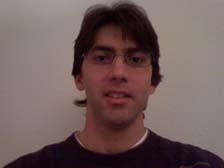 |
Stefano Benazzi Ph.D.I was employed as a Marie Curie post-doctoral fellow (EVAN training network) at Department of Palaeoanthropology and Messel Research, Senckenberg Research Institute. I'm a physical anthropologist working on the process automation of occlusal fingerprint analysis on hominid teeth for the reconstruction of evolutionary development of teeth and the interpretation of the dependency of morphology, biomechanics and environment. |
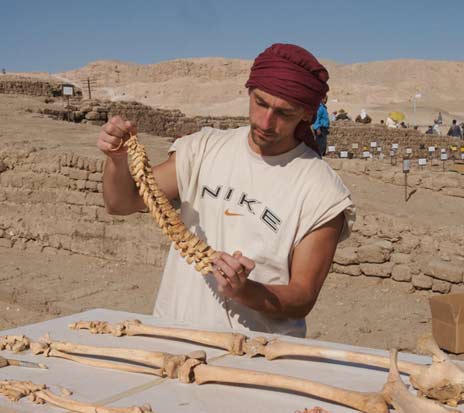 |
|
||||||
|---|---|---|---|---|---|---|
|
||||||
|
read more...
